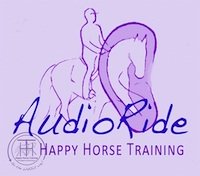|
Achieving Suppleness for Horse and RiderDeveloping suppleness in your horse is the result of systematic training which enhances the elasticity and power of the natural paces. All horses have the potential to move in a beautiful supple way when training correctly. 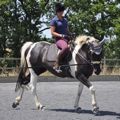
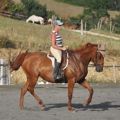
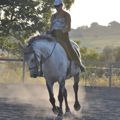
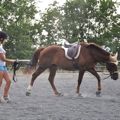
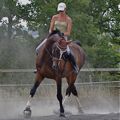
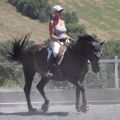
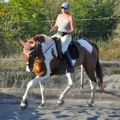
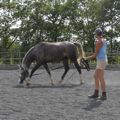
These photos show how any kind of horse - from warmblood to arab, thoroughbred to native - can acquire suppleness through correct training. What Does Enhancing Suppleness Mean? When something has more suppleness it means it can move in a more flexible way. When we systematically stretch and move our joints in a particular way, over time the muscles strengthen for both the stretch phase and the flexion phase. Different muscle groups are employed for each phase of a movement because an individual muscle has only one way of acting, that is to contract. This means that we have extensor muscles to allow us to stretch out our limb, and then flexor muscles to allow us to bend it. Not only do the muscles become stronger, the tendons which attach the muscles to the bone also become tougher and better attached. The intelligence of our body is responding to the physical demands we are making. If we are habitually stretching particular ligaments (ligaments attach bones to other bones), they will also respond to a certain degree, and lengthen or shorten as required. This is how we can form a correct leg as a rider (see Rider Biomechanics. This is a process which takes many, many years of consistent practice. A well as developing the musculoskeletal structure, we will also develop the central nervous system - what is often referred to as 'muscle memory'. This is the intelligence which operates the muscular activity. The nerves will memorize the physical postures and the movements you make when you ride, and allow you to become more efficient and quicker at finding the correct posture, and keeping it, and also responding to changing circumstance. This process of profound bio-structural adaptation to your role as a rider will happen in phases, and although the different physical processes happen in parallel, they will not necessarily always be in perfect harmony. Sometimes you may feel more supple, but less strong. Other times you might feel powerful but clumsy. Some parts of the rider's body will develop more quickly than others, and, during the process, some areas must be prioritized at the expense of others. For example, the rider must put the development of their abdominal muscles before that of their leg muscles. This is because there is an order which must be adhered to in putting the whole mechanism of you and your horse together in engagement. 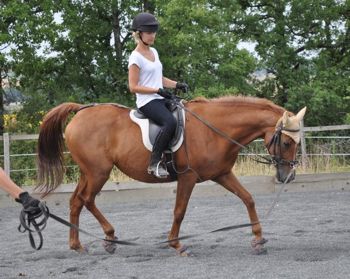
If there is a secret to achieving this transformation towards suppleness, it is simply to stick with it. Don't give up, and in time parts of your body will stay in place for longer, your horse will balance better and become straighter. Problems will arise and be resolved. It is a project which will continue for the rest of your life and will gradually become more and more natural to you and your horse. The relationship that you form with your horse as a result will be priceless. The reason that the fundamental training principles work is that when they are correctly carried out, you will make real physical changes to your horse and to yourself. Practice definitely makes perfect as long as you are practicing along the right lines, and over time the following changes will take place in your horse:
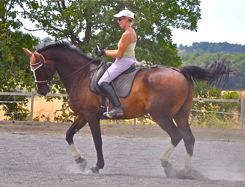
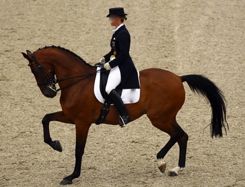
In these photos, the horse on the left is working in correct engagement - the means by which we achieve suppleness in riding, whereas the horse on the right is being forced, between spur and double bridle, into an artificial posture, resulting in tension and therefore stiffening of the joints. To an uneducated eye these two pictures could look quite similar, but they could not be more different in terms of the gymnastic dynamic that they portray. The Suppleness Challenge Evil is done without effort, naturally, it is the working of fate; good is always the product of an art. Charles Baudelaire In terms of the effort, both mental and physical, required not only of you, but also of your horse, in order to achieve a single moment of perfect unity, there is no doubt that correct riding is one of the most difficult activities you can attempt. There are always a thousand ways to do it wrongly, but only one way to do it right. If it is viewed, however, as the challenge that it undoubtedly is, and taken seriously, it will give you some of the greatest moments of fulfillment that you will experience in your life. As well as your physical development, you will also develop your ability to concentrate and remain patient in trying circumstances. Don't let yourself fall prey to quick fixes and gadgets, they are only a means of distraction from the real work. 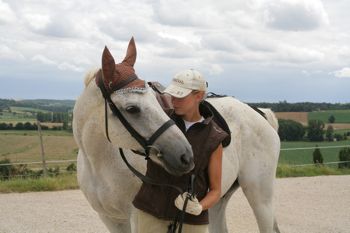
Remember that the process of developing suppleness will be just as trying for your horse, maybe more so because he has to accept your judgment of every situation which arises, and no-one is right every time. But if allowed and encouraged to, horses can and do take their work extremely seriously, and derive the greatest pleasure from it. It can not only civilize them, but it can capture their imagination and expand their horizons way beyond the ordinary outlook of a horse. Relevant pages on Happy Horse Training that may interest you: return from Achieving Suppleness in Horse and Rider to Happy Horse Training home |
New from HHT!
AudioRide is a series of exercises designed to listen to while you ride.
Audio descriptions guide you through each step of developing a balanced, dynamic connection with the horse through your position.
This truly innovative learning tool gives you a whole new way of being guided in your riding, in a calm, clear, step-by-step way.
Free Download! Introductory Exercise: Riding in the Now
Click here for full details
The Gymnastic Rider eBook
Now available exclusively from HHT! A unique, comprehensive guide to practical rider biomechanics. This professionally produced eBook takes the rider through the process of developing their body in the specific way that brings the horse's movement into harmony and balance - without force and constraint. Click here for full details, and to download the 15-page introduction for free.
Join the Happy Horse Training group on Facebook!
See and share topical info, news and photo's, and take part in lively discussions.
Click here to go to the HHT group and then click on the 'join group' button.
Join the Whole Horse Newsletter
HHT's free monthly newsletter giving you wide-ranging and intelligent insights into holistic horsemanship.
Just enter your details below to join.
Free bonus on the riding position with all new subscriptions: Ten Top Tips To Instantly Improve Your Connection With Your Horse.
Click here to see back issues of The Whole Horse newsletter
Train Your Horse
The Holistic Way
How To Train A Horse Without Force is a unique guide to training horses through energetic connection and gymnastic training. Part 1 covers everything on the ground, from handling to the lungeing technique that develops strength, straightness and engagement. Comes with a free eBook supplement on Horse Trauma.
Click here for more details.
What people say about the eBook:
"OMG! I'm BLOWN AWAY by this text [...] It's one of the best horse training texts I've ever read." - Wendy Kendall
"I realized that I haven't yet written you about the impact that your training e-book has had on me, and I want to let you know how inspiring and helpful I found it. As a student of Zen Buddhism for nearly three decades, I've often wondered when someone was going to write the book on Zen and the art of horsemanship, and I think that your emphasis on mindfulness and energy connection gets right at the heart of the matter. It has certainly deepened the way that I relate to and communicate with my horses. I am reasonably sensitive to horses' body language and mood, but new to me was the idea of feeling their energy in a more subtle way - including their connection with me even when I am not directly working with the them. I have made myself more aware of this communication, and it's pretty amazing. I have started grooming differently, too, treating a grooming session as a time to mindfully listen to my horse instead of a way to dust out an old rug (OK, I wasn't quite that bad, but you get the idea). Additionally, I have made myself more open to how I actually feel about the horses themselves - very enlightening. Overall, I think that you are saying something that no one else is saying but that everyone ought to hear." - Tess Lloyd
Do You Have
A Horse Story
To Share On HHT?
So many people have been through wonderful experiences with horses, whether in training or otherwise. If you've made a change in a horse's life - or one has made a change in yours - tell us about it here.
Learn How To Trim
Your Own Horse's Feet
The Simple Seven-Step Natural Trim is a comprehensive step-by-step guide to a cutting-edge barefoot trim. Click here to find out more.
What people say about HHT:
"The riding instruction is outstanding, if instructors in the UK taught this way there would be a lot of happy riders and horses."
"The riding tuition exceeded my hopes and expectations by a long way; giving me an exciting new facet to horsemanship which is lighter. more subtle, more elegant and more meaningful. It is as if a new door has opened bringing more sunlight and air."
"My goodness - what a change has taken place in my riding. I think that I'm starting to sit 'into' the horse rather than on top of him. I felt my horse's movements in a way that has almost never happened before"
Click on Testimonials for more






